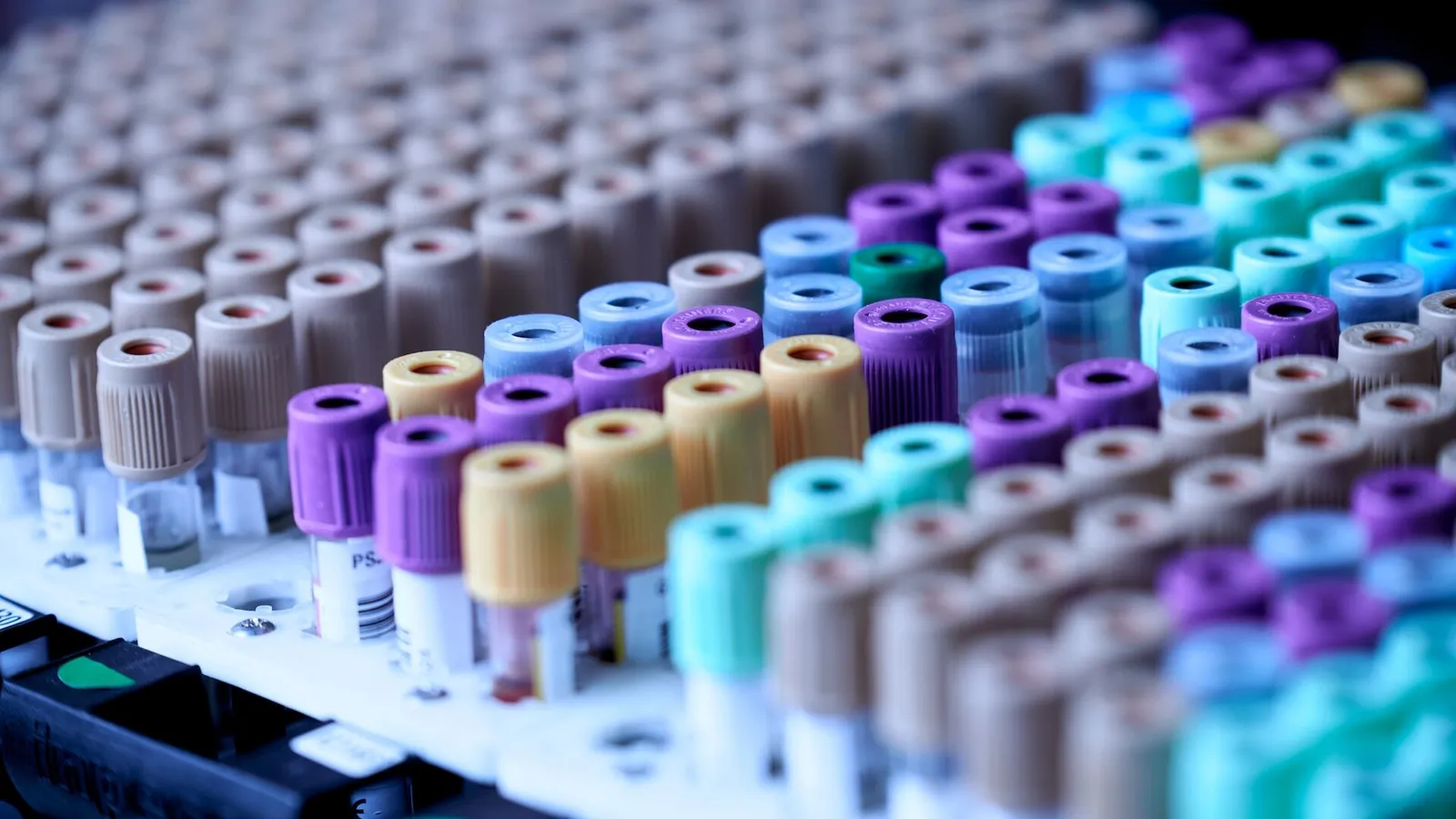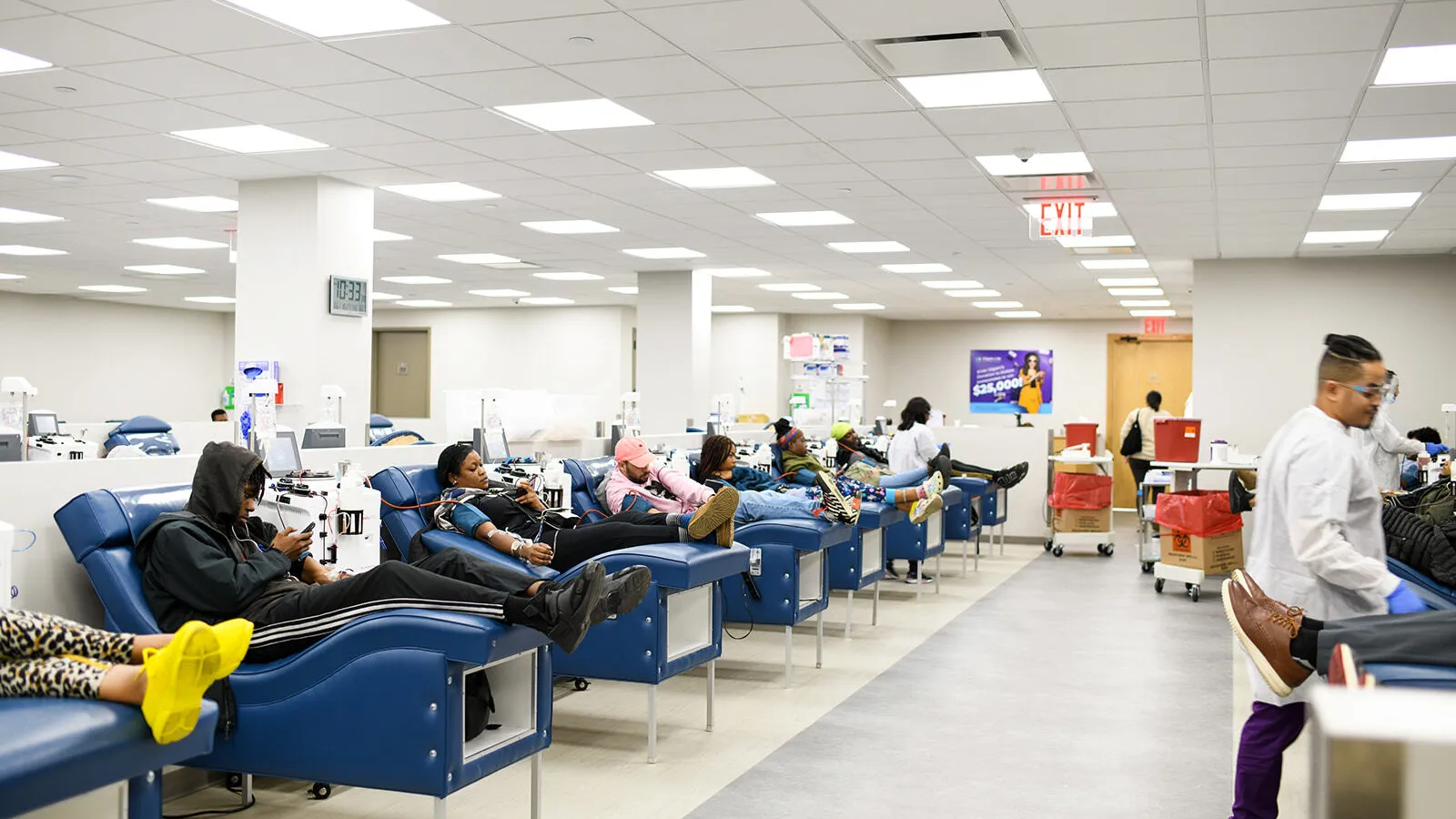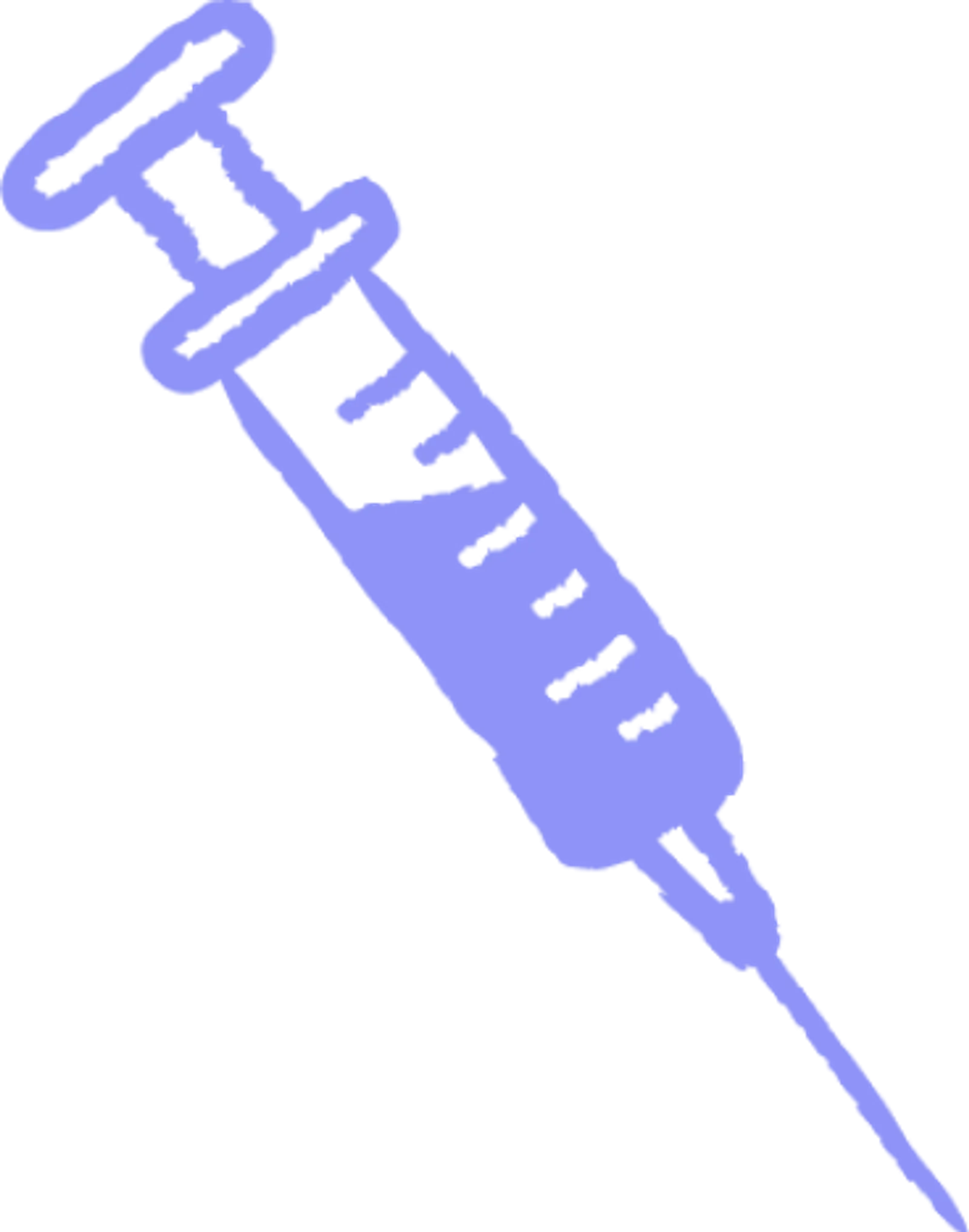New Donor?
Thank you for your interest in becoming an Olgam Life donor! You are welcome to stop by at any time, no appointment necessary.
Just be sure to bring:
1. Your current, unexpired ID
2. Proof of address within 50 miles of a center (a piece of mail or a bill with your full name and address will do)
3. Your social security card or a tax document with your full name and SSN displayed
The center will help you complete a health questionnaire and conduct a quick physical to determine your eligibility. After each successful donation, you will be paid between $50-$60 in NYC and between $50-$140 in Florida.
We hope to see you soon!
Plasma Donation: Debunking the Myths

In the realm of medical science, few topics are as misunderstood as plasma donation. We’ve seen firsthand the swirl of myths that often deter potential donors. Plasma, the largest component of your blood, plays a vital role in carrying cells and proteins throughout the body. Yet, misconceptions about the donation process and its effects on the body persist. In this article, we'll delve into the world of plasma donation, debunking common myths and shedding light on the truth. We'll explore the donation process, the impact of your contribution, and the real benefits and risks involved. Whether you're a seasoned donor or considering your first donation, this article aims to provide a clear, factual perspective on plasma donation.
Understanding Plasma
Definition of Plasma
Plasma, the liquid component of blood, is a complex mixture of water, salts, and proteins. It's not just a simple solution but a suspension containing many different substances. Constituting about 55% of blood fluid in humans, plasma plays a crucial role in maintaining the body's overall health. It's important to note that plasma is distinct from serum, another component of blood, which is plasma without clotting factors.
Role of Plasma in the Body
Plasma performs a variety of functions in the body. It serves as a transport medium for delivering essential nutrients to cells, such as amino acids, fatty acids, and glucose. It also carries away waste materials, like carbon dioxide, urea, and lactic acid. Moreover, plasma provides the body with hormones and other necessary proteins. It plays a vital role in regulating body temperature and protecting the body from diseases and infections.
Components of Plasma
Plasma is composed of about 92% water. The remaining 8% is a mix of vital substances such as glucose, hormones, proteins, mineral salts, fats, and vitamins. It's interesting to note that the proteins in plasma include antibodies, which alert the immune system to the presence of potentially harmful foreign substances. This makes plasma an essential part of the body's immune response.
Importance of Plasma Donation
Plasma donation is a critical process that can save lives. Donated plasma is used in a variety of medical therapies, including treatment for trauma patients, burn victims, and those with immune disorders. The process of donating plasma is similar to donating blood, but it involves a machine that separates the plasma from the other components of the blood. The red and white blood cells are then returned to the donor. The demand for plasma is high, and donations are always needed.
Plasma and COVID-19
During the COVID-19 pandemic, plasma donation took on a new level of importance. Convalescent plasma, which is plasma donated by individuals who have recovered from COVID-19, has been used as a treatment for patients with severe COVID-19 symptoms. The plasma from recovered patients contains antibodies against the virus, which can help those still fighting the infection.

The Plasma Donation Process
Eligibility for Plasma Donation
Not everyone is eligible to donate plasma. The eligibility criteria are set to ensure both the safety of the donor and the quality of the collected plasma. Generally, donors must be at least 18 years old and weigh at least 110 pounds (50 kilograms). They must be in good health and pass a medical examination. Additionally, potential donors must complete a health history questionnaire to rule out risky behaviors and exposure to certain diseases. It's important to note that these criteria may vary slightly between different plasma donation centers.
Step-by-Step Process of Plasma Donation
The plasma donation process, while it may seem daunting, is quite straightforward. It begins with registration, followed by a health history questionnaire and physical examination. Once you're cleared to donate, a healthcare professional will insert a needle into a vein in your arm. Whole blood (blood that is made up of plasma and all other components) is drawn through the needle and goes into a machine that separates the plasma from the other blood components. The remaining blood is then returned to your body. This process is called plasmapheresis. The entire process takes about 90 minutes to two hours.
Frequency and Duration of Plasma Donations
The frequency of plasma donation is regulated to ensure donor safety. In general, you can donate plasma as often as twice a week, with at least 48 hours between donations. This allows your body enough time to replace the plasma that was donated. The duration of each donation session can vary but generally takes about 90 minutes to two hours. This includes the time for registration, health screening, donation, and post-donation recovery. What you do and don’t do before donating plasma can help reduce your recovery time between visits and minimize side effects.
Common Myths About Plasma Donation
Common Myths and Their Debunking
We've come across numerous misconceptions about plasma donation. Some people believe that it's a painful process, while others think it weakens the immune system. These are just a few of the common myths that circulate. In this section, we'll debunk these misconceptions and provide factual information. For instance, while the needle prick might cause slight discomfort, the process is generally painless. As for the immune system, it remains unaffected as the body quickly replenishes the donated plasma.
Plasma donation centers take advantage of low-income people.
FALSE. Screening and payment for donations do not change depending on your income. In fact, we don’t need to know anything about your income at all.
Plasma donation isn’t safe.
FALSE. The FDA requires all plasma donation centers to carry out stringent health checks before taking plasma. This is so that we can be positive your donation will be completely safe for your health.
You can donate plasma regardless of your blood type.
TRUE. AB plasma is universal, meaning it can be given to anyone, so if you have an AB blood type, your plasma is especially helpful. However, it doesn’t matter what your blood type is. Plasma from any blood type can be used in therapeutic treatments.
You can donate plasma more often than whole blood.
TRUE. When we collect plasma, collect your whole blood and separate plasma from it, then return the remaining components back to you. This means you lose a less significant volume of cells. Additionally, plasma can regenerate faster than red blood cells.
There are some dangerous side effects to plasma donation.
FALSE. The health check required before a plasma donation means there are generally no dangerous side effects. As with any medical procedure, there’s a small risk of some side effects, such as allergic reaction, citrate reaction, and nerve damage. The chance of these occurring is very low. Find out more about the side effects of plasma donation.
The people who work at plasma donation centers are untrained.
FALSE. The staff in our donation centers have to pass certain training or join us with existing qualifications in order to safely conduct the procedures we carry out to collect plasma.
Even though the FDA allows it, donating twice a week is bad for you.
FALSE. Plasma is made up of mostly water, and the body regenerates plasma very quickly. Following a healthy diet rich in nutrients and drinking lots of water will ensure your plasma is always in top condition, but as long as you pass our health checks before each donation, there’s no negative impact on your health.

Encouraging Safe and Regular Plasma Donation
Benefits to the Donor
When you donate plasma, you're not just helping others; you're also benefiting yourself. One of the immediate benefits of donating plasma is the compensation you receive. Plasma centers often provide financial compensation to donors as a token of appreciation for their time and effort. This can be a helpful source of extra income for many people. Not all plasma donation centers offer the same compensation, so do your research before deciding where to go. Olgam Life offers instant cash payments as opposed to gift cards like other centers.
In addition to monetary compensation, plasma donation can also provide health benefits. Before each donation, a medical screening is conducted. This includes checking your pulse, blood pressure, and other vital signs. It's like a mini health check-up that can help you keep track of your health status. Plus, the body quickly replenishes the plasma you donate, which can help stimulate your body's production of plasma cells and maintain a healthy immune system.
Benefits to Recipients
The benefits of plasma donation extend far beyond the donor. Plasma is a crucial component of the body, and donated plasma can be used in a variety of medical therapies. These include treatments for immune system conditions, bleeding disorders, and other diseases like hemophilia and von Willebrand disease.
Plasma is also used in the treatment of burn victims. The proteins and antibodies in plasma can help speed up the healing process. Furthermore, plasma donations have been crucial in the fight against COVID-19. Convalescent plasma, which is plasma from individuals who have recovered from COVID-19, is used to help treat patients battling the disease.
By donating plasma, you're contributing to a larger cause. You're helping to save lives and improve the quality of life for people with a variety of health conditions. That's a benefit that's hard to quantify, but it's perhaps the most rewarding aspect of plasma donation.
Risks and Side Effects of Plasma Donation
It's crucial to understand that while plasma donation is generally safe, it does come with potential risks and side effects.
Common Side Effects
Plasma donation, like any medical procedure, can have side effects. These are usually mild and resolve quickly. Some donors may experience a bruise or slight discomfort where the needle was inserted. Others may feel faint or lightheaded during or after the donation. Dehydration is also a common side effect, as plasma contains water and electrolytes. It's important to drink plenty of fluids before and after donating to prevent this. Some people may also have an allergic reaction to the disinfectant used on the skin before the needle is inserted.
Rare Complications
While rare, there are more serious complications that can occur. These include a citrate reaction, which can cause symptoms like tingling in the lips, a metallic taste in the mouth, or chills. This is due to the anticoagulant used during donation and is usually resolved by slowing down or stopping the donation. In very rare cases, donors can experience a severe allergic reaction or injury to a nerve or artery at the needle insertion site.
Measures to Minimize Risks
Plasma donation centers take several measures to ensure donor safety. This includes a thorough health screening before each donation, using sterile, single-use equipment to prevent infection, and monitoring donors closely during and after donation. Donors are also encouraged to eat a healthy meal and drink plenty of fluids before donating and to avoid heavy lifting or strenuous activity for a few hours after donation.
The Truth About Plasma Donation
Plasma donation plays a crucial role in healthcare and research, not to mention the economic impact of plasma donation. It provides a lifeline for individuals suffering from various health conditions and contributes significantly to medical advancements. Let's delve into the impact of plasma donation through case studies and its role in healthcare and research.
The Role of Plasma Donation in Healthcare and Research
Plasma donation is a cornerstone of modern healthcare. Plasma, the liquid component of blood, contains proteins and antibodies that are crucial for the body's immune response and clotting mechanisms. When donated, this plasma can be used to create therapies for a variety of conditions, including immune deficiencies, hemophilia, and burn injuries.
In addition to direct treatment, plasma donations also play a vital role in medical research. Scientists use donated plasma to study the body's response to diseases, develop new treatments, and understand human biology better. For instance, plasma donations have been instrumental in the development of treatments for COVID-19. Convalescent plasma, collected from individuals who have recovered from the virus, has been used to treat patients with severe COVID-19 symptoms.
Moreover, plasma donations contribute to the advancement of diagnostic capabilities. For example, researchers use plasma to develop tests for conditions like hepatitis and HIV. These tests have been instrumental in controlling the spread of the se diseases and improving patient outcomes.
In this journey, we've explored the multifaceted world of plasma donation, shedding light on its importance and debunking common myths. We've learned that plasma, a vital component of our blood, plays a crucial role in treating numerous health conditions and advancing medical research. We've walked through the donation process, understanding its safety measures, and the minimal risks involved. We've debunked myths, replacing misconceptions with facts and scientific evidence. We've also highlighted the tangible benefits to both donors and recipients and the broader impact on healthcare and research. Plasma donation, therefore, isn't just a simple act of giving; it's a lifeline for many and a significant contributor to medical advancements. Let's continue to spread awareness and debunk myths about plasma donation, because every drop can make a world of difference.
















